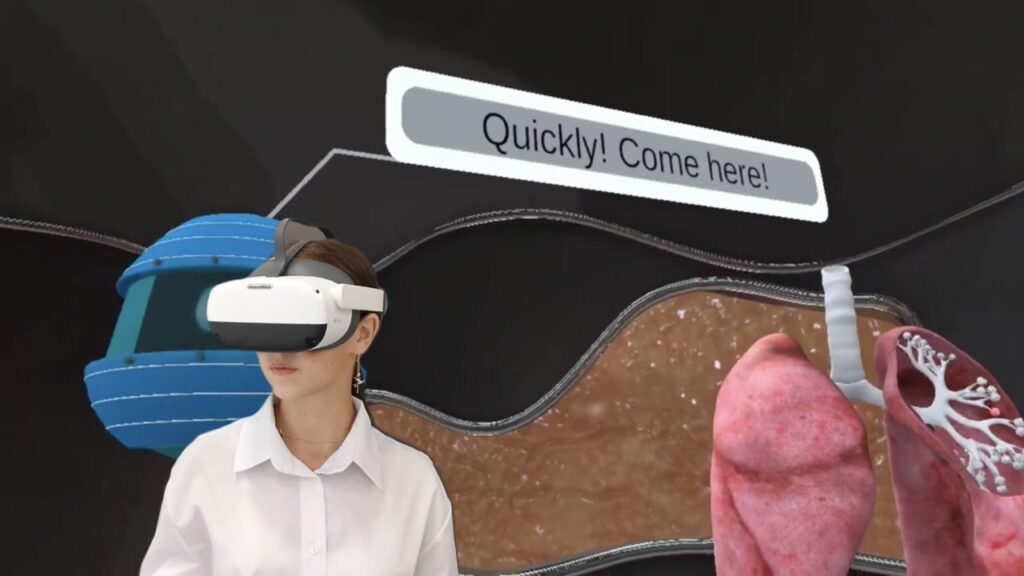Despite significant strides toward gender equality, the gender gap in STEM (Science, Technology, Engineering, and Mathematics) remains a pressing issue. No one has ever been able to prove that there are physiological differences causing differences in STEM abilities between boys and girls. Yet, stereotypes and myths about girls’ lesser ability in STEM sciences still flourish in society, influencing perceptions and opportunities.
The Vicious Cycle of Gender Stereotypes
A vicious cycle perpetuates the gender disparity in STEM fields:
- Adults Pass on Gender Stereotypes to Children: Parents, teachers, and media often unconsciously convey the message that STEM is more suited for boys. Phrases like “boys are better at math” or the lack of female representation in STEM-related media reinforce these stereotypes.
- Girls Are Pushed Away from STEM: Internalizing these stereotypes, girls may doubt their abilities in math and science, leading them to disengage from these subjects early on.
- Fewer Girls Pursue STEM Careers: With diminished encouragement and self-confidence, fewer girls choose STEM majors in higher education, resulting in a lower number of women in STEM professions.
- Lack of Female Role Models: The scarcity of women in STEM fields means fewer role models for young girls. Without visible examples of successful women in STEM, girls may find it harder to envision themselves in such careers.
- Reinforcement of Misconceptions: Society observes the low number of women in STEM and misinterprets it as evidence that men are inherently more capable in these areas, thus restarting the cycle.
Breaking this cycle is essential to ensure that all individuals, regardless of gender, have the opportunity to pursue their interests and talents in STEM.
Pressures Influencing Girls’ STEM Participation
Girls face multiple pressures that can deter them from engaging with STEM subjects:
- Self-Perceptions: Based on limited life experiences and exposure, girls may develop a belief that STEM fields are not for them.
- Parental Influence: Parents might unconsciously steer their daughters away from STEM by providing more STEM-related toys to sons or encouraging different extracurricular activities.
- Societal Attitudes: Media representations often lack female STEM professionals, and societal expectations may label STEM fields as masculine.
- Educational Environment: Teachers, even well-meaning ones, can inadvertently push girls away from STEM due to their own biases or stereotypes.
The Role of Teachers: A Study on Gender Bias
A pivotal study published in the Journal of Educational Psychology (Ganley et al., 2018) examined how teachers’ gender stereotypes affect their recommendations to students regarding academic path choices. The study found that:
- Teachers were more likely to recommend boys for math and science majors even when girls had similar or higher abilities in these subjects.
- Girls were often recommended for humanities majors, aligning with traditional gender roles.
This bias can significantly impact students’ self-confidence and interest in STEM. Teachers play a crucial role in shaping STEM preferences in boys and aversion to STEM in girls by influencing their perceptions of their own abilities and suitability for these fields.
Empowering Girls Through Education Systems

Addressing the gender gap requires a multifaceted approach within educational systems:
- Professional Development for Teachers: Training educators to recognize and counteract their own biases can lead to more equitable encouragement and support for all students.
- Curriculum Inclusivity: Incorporating examples of female scientists and engineers in teaching materials can provide girls with relatable role models.
- Encouraging Participation: Creating an inclusive classroom environment where girls are encouraged to participate in STEM activities builds confidence and interest.
- Parental Involvement: Schools can engage parents to foster supportive attitudes toward girls pursuing STEM subjects.
Leveraging Virtual Reality to Bridge the Gap

One innovative solution to engage girls in STEM is through virtual reality (VR) education. VR offers interactive, hands-on experiences that make STEM subjects more accessible and engaging.
How VR Makes a Difference
- Immersive Experiences: VR simulations in VR biology, VR physics, and VR chemistry allow students to perform experiments and explore concepts in a virtual environment that might be impractical or impossible in a traditional classroom.
- Role-Playing as STEM Professionals: Students can try on the exciting experience of a STEM researcher while navigating scientific virtual simulations. This immersive role-playing helps girls envision themselves as scientists or engineers.
- Personalized Learning: VR provides vivid personalized experiences that cater to individual learning styles, helping students grasp complex concepts more effectively.
- Overcoming External Pressures: Positive experiences in VR can help girls resist adult attempts to steer them down a different academic path, especially if they genuinely enjoy STEM subjects.
Benefits of VR in Education
- Equal Access: VR creates a level playing field where all students have the same opportunities to engage with STEM content.
- Increased Engagement: The interactive nature of VR keeps students engaged, enhancing their interest and motivation.
- Safe Learning Environment: Students can experiment without the risks associated with physical laboratories, encouraging exploration and creativity.
Take the Next Step: Request a Free Demo
Experience the transformative power of VR in education. Our demo package offers a glimpse into how VR can inspire and empower students in STEM.
👉 Request your free demo today and discover how VR can make a difference in your classroom.
The Broader Context: Addressing Declining Interest in STEM
The gender gap is not the only challenge facing STEM education. There is a general decline in interest in STEM subjects among students, which exacerbates the shortage of future professionals in these fields. In our recent article, Why Interest in STEM Declines and How VR Revives It, we explore this issue in depth.
The Responsibility of the Education System
- Fostering a Love for STEM: Educators must find innovative ways to make STEM subjects engaging and relevant to students’ lives.
- Preparing Future Professionals: The world needs doctors, engineers, environmentalists, and high-tech professionals to address global challenges.
- Promoting Diversity: A diverse STEM workforce brings a variety of perspectives, leading to more innovative solutions.
Conclusion: Breaking the Cycle
Closing the gender gap in STEM is essential for fostering innovation and meeting the demands of the future. By addressing stereotypes, supporting educators, and leveraging technologies like VR, we can create an environment where girls feel confident and excited about pursuing STEM subjects.
- Empowerment Through Experience: VR provides girls with firsthand experiences that build confidence and interest in STEM.
- Challenging Stereotypes: By showcasing successful women in STEM and providing equal opportunities, we can dismantle the myths that deter girls from these fields.
- Collective Effort: It requires collaboration among educators, parents, and technology providers to make lasting change.
Let’s break the cycle of gender stereotypes and open the doors of STEM to everyone, regardless of gender. Together, we can nurture the next generation of innovators and problem-solvers.
11 / 18 / 2024



